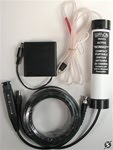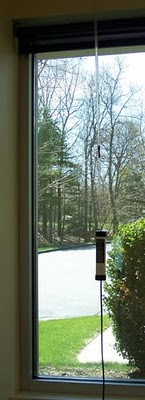Chances are, if you have a scanner in the house, you have wondered if you need an outside antenna. While an outside antenna will almost always work better than an indoor antenna, sometimes that just isn’t feasible. If you live in a rental property, apartment or condo, or in an HOA restricted area you may not be able or allowed to install an outside antenna. Sometimes you just don’t want to go thru the work to do it. Maybe the spouse or significant other just won’t allow it.
There are alternatives, but as they are also compromises, they may work as well. They may however be good enough to allow you to listen to your targets. Depending on your unique situation, some or all of these ideas may or not work for you. Remember: There is never a guarantee that any of these ideas will ensure that you will be able to monitor your targets.
Let’s start with the simple ideas first. Your new scanner comes with a back of the set (or side of the set for a Home Patrol) antenna. This is usually a metal telescoping rod or a rubber-duck style antenna. Sometimes better reception may be had by a simple relocation or tilting the existing antenna. Maybe move the radio with its antenna closer to a window or away from the large metal objects will help.
The next step would be a better BOS (Back Of Set) antenna. ScannerMaster sells a variety of antennas, from direct replacements (if you lost or broke the one that came with the radio) as well as more advanced antennas. If you mostly monitor 700/800 MHz. systems a specialized antenna for these bands will work better than a general use antenna.
If these don’t help, then you may need a remote inside antenna like the Nomad. The Nomad is a wire antenna and is amplified (active). This allows you to mount the antenna in a better location and leave the radio where you want it.
The next step might be using a base station antenna indoors. ScannerMaster has several of these types. Basically this means a base station antenna with some sort of base to support it along with appropriate coax and connectors. These can be set up on a balcony or behind the drapes for aesthetic purposes.
You can also try a mobile antenna adapted to home use. Try a magnet mount antenna on top of a large metal cabinet, window air conditioner or balcony railing. Window mount antennas can be mounted on an apartment window just like you would on a car. Suction cup mounts work in a home just as well as in a car.
If you have access to an attic then you might try putting a base station antenna there. Try to stay away from large metal objects. If you have metallic shingle liners or solar panels they would likely interfere with your reception.
If you install an antenna outside, either on the roof or a tower, make sure to properly ground the installation to protect from lightening and watch out for electrical wires! Consider having them professionally installed. Use a high quality coax. Usually thicker cables work better at higher frequencies and longer distances. 50 or 75-ohm cable is fine for scanners since you will not be transmitting thru them. We will have a blog post soon all about Coax!

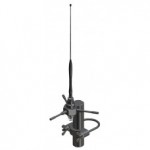 Having a hard time receiving trunked and digital 700 and 800 MHz systems?
Having a hard time receiving trunked and digital 700 and 800 MHz systems?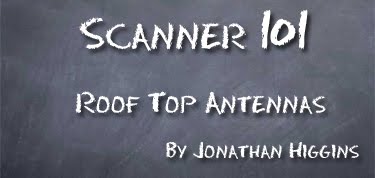
 By Jonathan Higgins
By Jonathan Higgins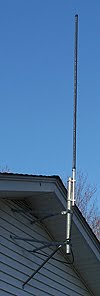 When mounting an antenna outside make sure your clear of any power lines, and never install antenna by yourself. Try to find the best route for the coax cable, make sure you measure the route and only allow a little extra. Rule of thumb, higher the antenna the shorter the coax is always the best.
When mounting an antenna outside make sure your clear of any power lines, and never install antenna by yourself. Try to find the best route for the coax cable, make sure you measure the route and only allow a little extra. Rule of thumb, higher the antenna the shorter the coax is always the best.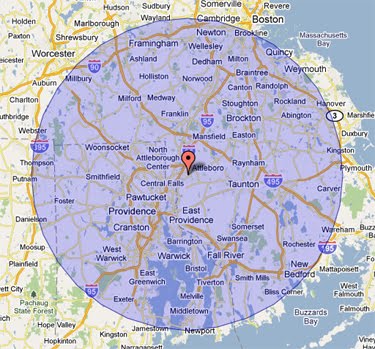 In Massachusetts and Rhode Island, most of the public safety is using VHF High Band or UHF. I was amazed by the reception. I was able to pick up UHF systems for 15 to 30 miles away without a problem, and as for the VHF, about 30+ miles away. In Massachusetts, the State Police are on an analog 800MHz trunking system. I was able to pick up the local site with ease and neighboring sites up to 20 miles away. I found that the height of the Ferret really brings in the VHF Low Band without a problem.
In Massachusetts and Rhode Island, most of the public safety is using VHF High Band or UHF. I was amazed by the reception. I was able to pick up UHF systems for 15 to 30 miles away without a problem, and as for the VHF, about 30+ miles away. In Massachusetts, the State Police are on an analog 800MHz trunking system. I was able to pick up the local site with ease and neighboring sites up to 20 miles away. I found that the height of the Ferret really brings in the VHF Low Band without a problem. Details about the Ferret…
Details about the Ferret… By Jonathan Higgins
By Jonathan Higgins